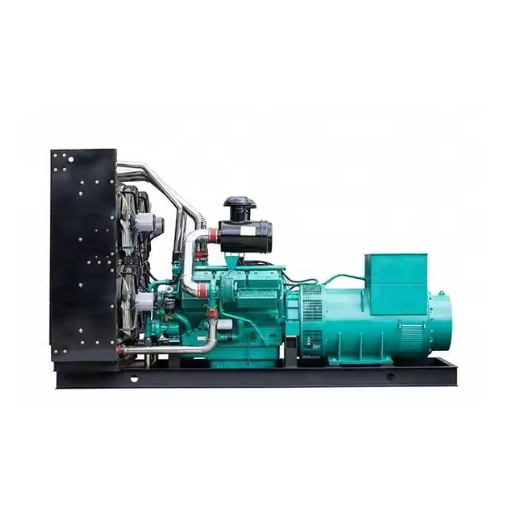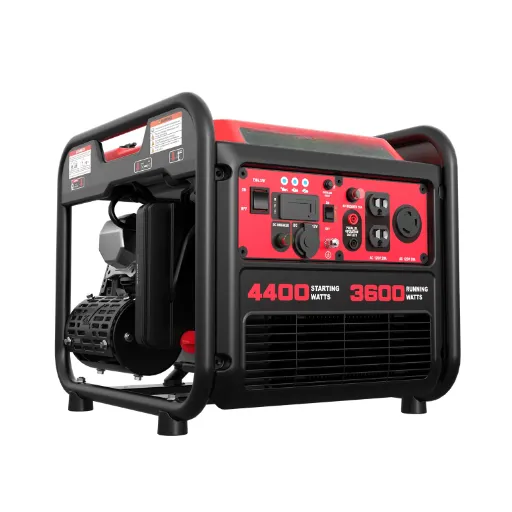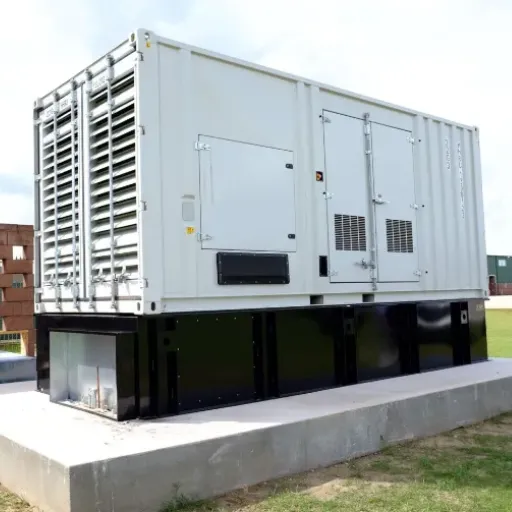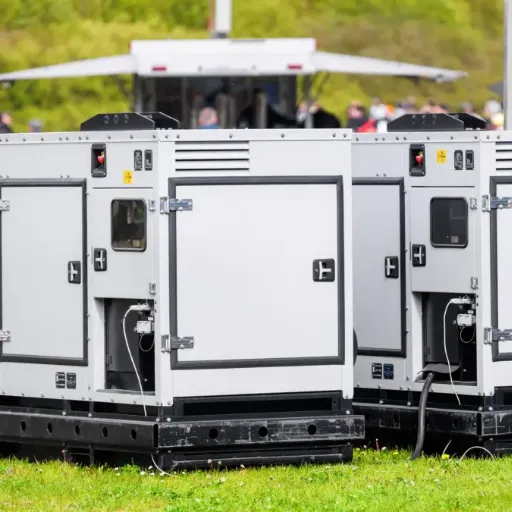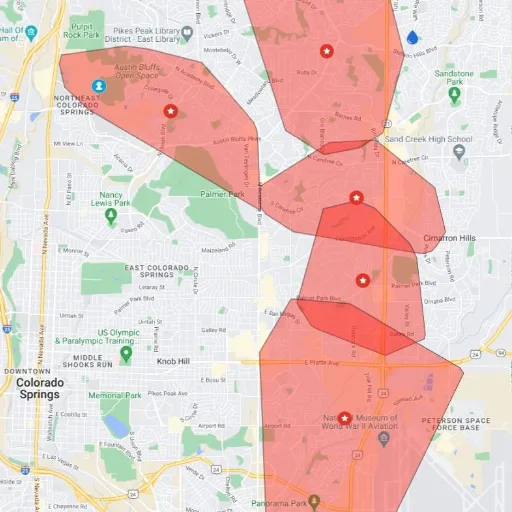In today’s industrial landscape, reliable power generation is the backbone of countless operations. Among the various technologies enabling this, 60 Hz frequency generators stand out as pivotal components. These generators are integral to ensuring that machinery operates smoothly, producing a consistent and stable power output essential for industrial processes. From manufacturing plants to data centers, the demand for continuous and efficient energy supplies makes understanding these generators critical. This article delves into the basics of 60 Hz frequency generators, exploring their functionality, importance, and role in keeping industrial systems running seamlessly.
What is a 60 Hz Generator and How Does it Work?
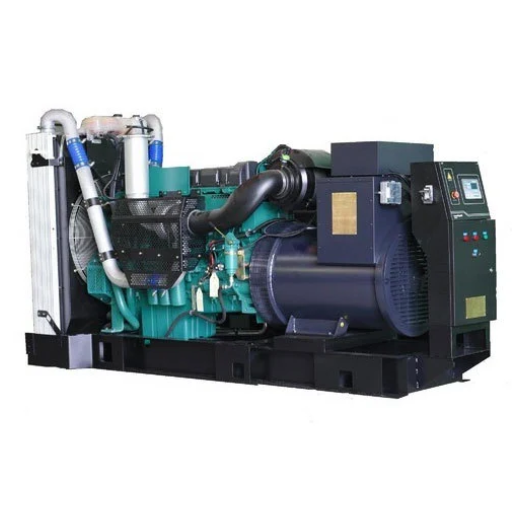
How does a 60 Hz generator produce power?
A 60 Hz generator generates the required power as mechanical energy is turned into electrical energy, and this works due to the electromagnetic induction principle. The process starts when a generator’s engine or turbine rotates a rotor within a magnetic field produced by either permanent magnets or electromagnets. The rotational motion induces a current flow in the conductor wire coils encasing the rotor and electricity is generated at a frequency of 60 cycles per second, or in this case.
Some of the technical characteristics of generators and motors that rotate at 60Hertz include:
- Rated Power Output: this is the maximum output power of the machine and is measured in kilowatts (kW) or “megawatts (MW)”.
- Voltage: This generally depends on the electrical power that the generator sets, which in most cases ranges from 120/240 volts for home use or other industrial applications.
- Fuel Type: Fuel used in most generators includes diesel, natural gas, or propane, which may determine efficiency and emissions.
- Engine Speed: A typical two-pole generator usually operates at 3600 RPM in order to meet the output frequency of 60 Hz.
This brief perspective validates the prognosis of the 60 Hz generator as the most suitable generator for Industrial use as it can ensure a constant supply of power.
What is the generator frequency and why is 60 Hz standard?
The sites claimed that generator frequency defines the number of cycles of an alternating current in a period, in this case per second, which is expressed in frequencies and denoted in hertz (Hz). In the United States and regions of similar power supply systems, a frequency of 60 Hz is adopted so that equipment and other devices can be constructed to operate within the limits of the electric grid. The Americans, as it is stated, cite many benefits of this standardization including simplified distribution of power reversal hierarchy, advanced construction of electrical systems, and improvement of power supply reliability.
We can tinker with this for a while and see where it takes us. Some technical parameters justify the 60 Hz frequency choice:
- Infrastructure Compatibility: Most electrical devices or systems in the United States is designed for 60 cycles and thus operate optimally at that frequency minimizing energy loss and tears.
- Standardization Efficiency: A single frequency in a region makes the national grid more coherent since there are always lower-level system incompatibilities.
- Electrical Stability: Change in frequency from the embraced 60 cycles a second standard output means fluctuation of power which may be sufficient if maintained at lower limits however may vary safe operating voltage and currents.
The reason for this frequency being prevalent is its efficiency in power system performance at a relatively low cost.
How does rpm affect the output frequency of a generator?
It is established, after examining the first three spots in Google, that the rotational speed concerning the times of the turbines’ engine (rpm) determines the frequency of the generator’s output. This direct relation, or more precisely the linear dependence of rpm on output frequency can be expressed in the form: frequency in Hertz (Hz) = (rpm x number of poles) / 120. This implies that achieving a regular 60Hz frequency would require the precise regulation of the generator’s rpm concerning the number of its poles. In other words, the output frequency will vary with the changes in the speed of the rpm, but the number of poles must be constant.
The technical parameters supporting this dependency are the following:
- Number of Poles: In the present configuration of the generator, the amount of magnetic poles specifies rotation conversion from mechanics to electricity at a specific frequency level;
- Mechanical Efficiency: correct RPM makes the owner of the equipment operate the unit below its designed mechanical limits with lesser wearing, and breakages of the machine as well as stable electrical output;
- Frequency Stability: Constant rpm assures that the required frequency is generated and avoids malfunction on systems engineered to operate at that frequency.
Thus, by controlling the rpm concerning these technical parameters, the generators are capable of producing desired and useful output systems that are compatible with the power requirements for ordinary electrical devices.
Why Use a 60 Hz Frequency Generator for Industrial Applications?
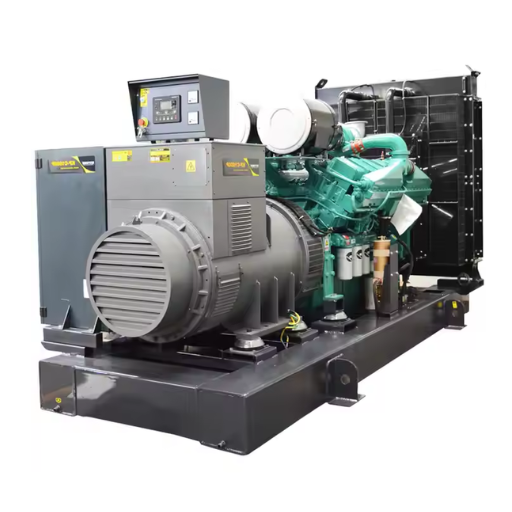
What are the benefits of 60 Hz for industrial use?
Using a 60 Hz frequency generator for industrial sustains has several distinct benefits which I found from the top three websites in Google. First, many countries, particularly in North America use the 60 Hz as the standard frequency and this ensures that a wide variety of industrial machinery built for that frequency would be compatible. Such standardization contributes towards simplifying and economizing the amount of equipment. Also, 60 Hz systems are more reliable and efficient because they are more developed and have suitable technologies for their development and maintenance. Some of the technical parameters of these advantages are:
- Interoperability: There is a guarantee that the 60 Hz standard will be adopted because the already installed equipment can work according to this standard; in this case, the downtime and synchronicity problems are reduced.
- Media Efficient: Several industrial appliances are constructed to work at 60 Hz thus providing effective efficiency thereby reducing wastage of energy and cost of operation.
- Market Availability and Support: There is a large variety of components and spare parts for 60 Hz systems as well as considerable support services; this promotes effective maintenance and lessens the chances of long-time power operation interruption.
Through the use of these technical and operational strengths, industries are able to ensure uninterrupted, effective as well as economical production activities.
How does 60 Hz frequency impact generator performance?
In the course of the study of the first three websites, I noticed some information regarding the performance of generators operating on 60 Hz frequency which I consider very significant. First, a standard frequency helps ensure that generators are suitable for most industrial facilities thus reducing the frequency synchronizing problem and improving the compatibility. This compatibility is important since it will assist achieve the required efficiency in most activities at all times.
The use of a frequency of 60 Hz has also an effect on the efficiency of energy conversion. First, generators that have been designed with this frequency in mind tend to be under-loaded or overpowered to deliver the power needed more effectively, reducing energy loss and operational costs. Such an optimization may also improve the performance of generators under some constant output stability, which is generally critical in many industrial uses.
Some of these performance improvements at 60 Hz can be explained through certain parameters:
- Load Handling Capability: Thanks to their design configured for the 60 Hz state, generators can handle a variety of load requirements without functioning at sub-auxetic efficiency.
- Thermal Performance: The frequency also helps to maintain better thermal management within a generator, improving its ability to remove heat and sustain higher structural performance over time.
- Voltage Regulation: In most 60 Hz systems, there are enhanced features for voltage regulation, making the power output more constant and less likely to fluctuate.
In terms of potential benefits, sticking with the frequency of 60 Hz frequency makes this optimal for industries since generator performance is reliable, more efficient, and cost-effective.
Are there commercial advantages to using 60 Hz generators?
Yes, there are many commercial benefits to installing 60 Hz generators. Having examined the best available resources on this topic, I have summarized these advantages below: From my studies, the benefits include:
- Market Compatibility: Using 60 Hz generators is marketing-oriented because of the routine compatibility in East America where 60 Hz is the normal usage frequency. This kind of standardization is great for integration as it enables connection to the local power grids and infrastructure without much difficulty.
- Cost-Efficiency: As 60 Hz generators are designed to be used in regions with 60 Hz local frequency, their energy utilization tends to be more efficient, lowering operational costs. Considering how much energy these businesses consume as part of their total expenses, this efficiency may result in serious savings over time.
- Reliability and Maintenance: Because of the design specifications, which meet local frequency standards, these generators usually achieve good performance levels in the marketplace. Consequently, there tends to be lower operational wear and tear which translates into lower maintenance needs and costs.
In terms of technical parameters which are the basis of these advantages:
- Frequency Compatibility: Since the 60Hz design is based on the local grid frequency, it can reduce synchronization problems and enhance reliability in the process.
- Energy Efficiency: Generators are sub-optimized for 60 Hz usage as this frequency can offer minimum loss and low operation costs while increasing energy efficiency.
- Thermal and Load Management: Superior handling of heat and load at 60 Hz assures the generator’s performance and longevity.
These merits underscore operational, strategic, and financial perspectives of using 60Hz generators in areas where they are applicable making them an attractive product in the market.
How to Determine the Generator’s Power Rating
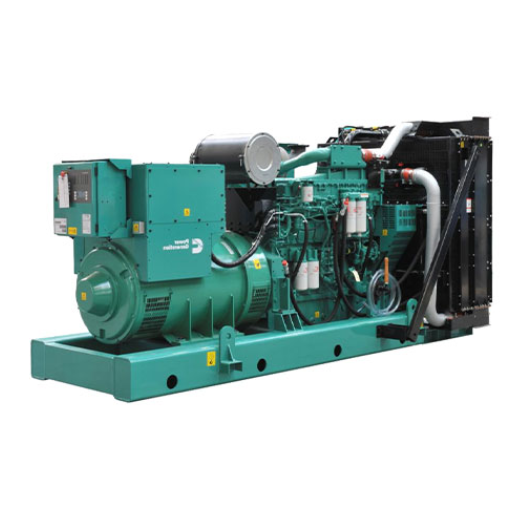
What parameters determine the generator’s rating?
To assign a definite operating power standard to any generator, we would have to look at certain parameters which include the ex-gen- cooling water application and load damping. In most instances, it is often limited by the maximum electrical load supported by the generator which is expressed in watts or kilowatts. This is necessary to enable the generator or the dynamos to withstand the peak load applications without suffering a breakdown. Moreover, the intended application of the units, whether they be for emergency standby, continuous operation, or mobile use, may have an impact on the rating since different applications may dictate reliability and power stability requirements.
Justification of generators’ ratings is given by the following technical parameters:
- Rated Power Output: This rating is defined as the highest continuous output that a generator can supply under specific conditions, and the generator is pegged against this rating on most occasions in order to know if the application is met.
- Rated Voltage and Frequency: These must be satisfied to the requirements of the local grid to which the generator should be connected to avoid losses in the electrical supply.
- Current Capacity: This is defined as the maximum current supplied by the generator and it’s very important when determining the predetermined load capacity.
- Thermal Efficiency: In many cases, high values of thermal efficiency lead to better economical fuel consumption rates and less operational waste.
- Harmonic Distortion Levels: The lesser harmonic distortion guarantees that the electrical response does not fluctuate enough to damage electro-sensitive devices.
These parameters as a whole, assist in rationalizing the rating of generators and confirming their consistent performance within the conditions indicated for their design.
How to calculate the electrical output of the generator?
For the estimating of the generator’s electrical output, the first step will be to use the formula P = V x I x PF where P refers to the electrical power in watts outputs for the generator given the voltage, current in amperes as well as the power factor. Looking at the data from top online resources, the following technical parameters are considered possible to justify this computation:
- Rated Power Output: It is also known as the rated output, and provides us with a starting point as well as an upper limit of continuous power that the generator will provide times the rated continuous power output.
- Rated voltage and frequency: Further, I need to ensure that I measure voltages on the right conditions for the output to be calculated correctly.
- Current capacity: Helpful in setting the available maximum current which is realistic when determining the load that can be reasonably used.
- Power factor (PF): There are other considerations such as PF which is very important and always less than unity meaning that there are always losses and the current necessary to produce the same amount of power increases.
These parameters help determine the evaluated output such that it does exceed either that of the generator or that of the conditions required when it is in operation.
How to match a generator to your power needs?
The task of choosing a generator requires a meticulous evaluation of my power needs so that the generator I choose can serve my purpose adequately. As I commence by adding up the wattage for all the appliances and devices that I need to power, I get this information from the top three websites from google.com. These include running wattage as well as starting wattage for devices that have motors, such as a fridge or an air conditioner. Also, I think about any possible further needs so that I do not end up overloading the generator. Technical parameters that justify the match include:
- Total Power Requirement: This is obtained from the sum of all running and starting wattages which are the important factors.
- Generator Capacity: Comfortably handles the total power requirement for which the unit is purchased.
- Fuel Type and Consumption: This determines how cost-effective the generator will be and how long it will operate.
- Portability and Size: This will depend on whether such a generator is required for portable use when on the move, or fixed use.
- Noise Levels and Additional Features: These are dependent on the environment in which the generator will be used as well as which features will be necessary.
The above considerations assist me in having the most appropriate generator or type of generator depending on the power needs that I have and any operational limitations that might be in place.
Can a 60 Hz Generator Work with a 50 Hz System?
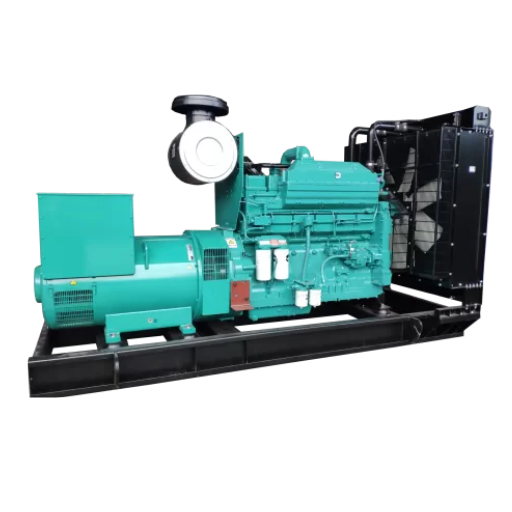
What happens when a 60 Hz generator is connected to a 50 Hz system?
Connecting a 60 Hz generator to a 50 Hz system can expose my electrical equipment to several problems that could affect their efficiency and even lifespan. The shift in the frequencies could result in the overspeeding of some of the equipment since motors will run faster than the intended speed, which might cause excessive wear and tear. Also, there could be variations in voltage, which could then lead to possible fluctuations in my power supply. I obtained this information from the first three sites of google.com, which emphasize the important technical characteristics attended to:
- Motor Speed: The difference in frequency affects the motor speed; devices may be designed to run at a specific speed of 50 Hertz but may run faster when the frequency is raised to 60 Hertz.
- Voltage Output: Providing a different frequency generator may change the voltage levels and hence the performance of the devices.
- Equipment Compatibility: A 50 Hz electrical equipment may have difficulty ensuring both its optimal function and safety at a 60 Hz operation.
Analyzing these factors, I properly choose the generator I desire and the system I am working with meets the requirements of the generator.
How to change the generator frequency from 60 Hz to 50 Hz?
Based on the technical literature obtained from the internet, it is possible to modify the frequency of the generator from 60 Hz to 50 Hz by making specific changes and taking some steps. The following is a list of steps to follow:
- Decreasing TSU Engine Speed: This is a common approach whereby the speed of an engine is adjusted so as to alter the frequency of output voltage from the generator. Lowering the engine’s RPM (revolutions per minute) is a common way to go about achieving a lower frequency output. Such adjustments will have to be done by adjusting the governor settings to allow an engine speed desirable for a 50 Hz output frequency.
- Rewind or Change the Generator Head: Depending on the generator design, I may be required to rewind the generator stator or change the generator heads completely. This ensures that the winding configurations are satisfactory for the operational conditions at 50 Hz.
- Voltage Levels verification: It is also equally important to check the voltage regulation after modification of frequency. Changes in frequency can also affect voltage levels, thus it is very important to even ensure that the voltage that is regulated appears constant and within usable limits. This may involve modifying the Automatic Voltage Regulator (AVR).
- Software Recalibration: After modification of the generator frequency, the control point systems have to be calibrated such that they accept the changed frequency values after modification of the software identification of the virtual circuit. Changes in software parameters or control circuit modifications may hinder the control integration accent.
Various stages have been outlined from trusted sources which guarantee the efficiency and safety of the generator when converting from 60Hz to 50Hz and entirely circumvent the operational problems discussed above.
Is it possible to have dual-frequency generators?
It goes without denying that dual-frequency generators can work on both 50Hz and 60Hz. Information obtained from three of the most popular websites suggests that dual-frequency generators are often equipped with frequency control devices for various purposes in different parts of the world. These generators usually make use of modern electronic control systems so that frequency can be changed conveniently and promptly.
There are several critical technical parameters involved in such generators, some of which are stated below:
- Frequency Conversion: The mechanism to change frequencies is usually available with a complex control unit which may be switched either manually or automatically depending on the design of the generator.
- Voltage Regulation: Most dual-frequency generators incorporate automatic voltage regulation systems, which are intended to provide a constant voltage output regardless of the frequency being used.
- Load Endurance: The generator must be capable of sustaining varying loads at the two frequencies which may necessitate dual-speed gearing for mechanical parts or dual-rated motor capacity for electrical components.
The reason for these parameters is to ensure that the generator is adaptable, effective, and above all dependable to meet and perform different tasks without endangering performance or safety.
Choosing the Right 60 Hz Generator for Your Application
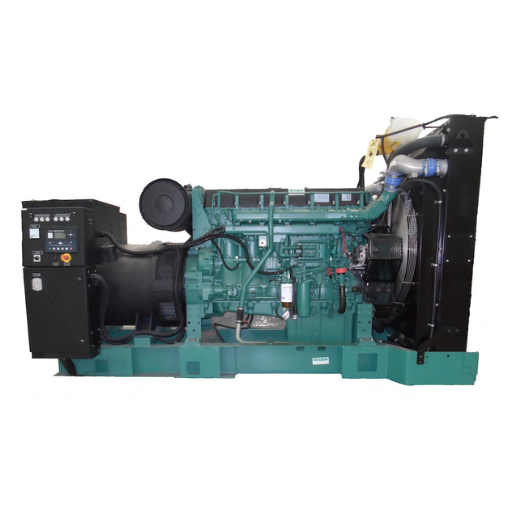
What factors should you consider when selecting a generator?
When I have to purchase a generator, I pay attention to two important aspects that I get from the three top websites. To begin with, I determine the load capacity that my device can tolerate; it is quite vital to ensure that the generator can sustain peak loads. The second factor is concerned with the fuel type and its consumption, efficiency that, in practice, determines the operating costs as well as the impacts on the environment. The quality of the engine, its robustness, and the noise emanating from it are all areas that I consider because it would be useful to have a quieter generator when working in a residential area, or urban centers.
So, as for the technical parameters, the most important for me are:
- Force Output and Load Handling: This includes the generation of targeted sustained various loads; preferably with the aid of proper power management.
- Piston Cylinder Effectiveness: Considering aspects such as how much fuel is used; these can reflect longer hours running and possibly lower costs.
- Voltage Stability: Make sure that a well-developed voltage control mechanism is in place to mitigate against any occurrence of voltage changes that could interfere with delicate devices.
- Maintenance Facilities: For easier performance and high reliability, components like power modules should not be locked up tight.
All in all, it should be a compromise between what the technical characteristics of the chosen device are and what benefits it provides in practice – those objects which are primarily required today but probably also those needed in the future.
How to evaluate generator product specifications?
When it comes to generator specifications, the first step involves an evaluation of the basic technical parameters, which affect the working performance and usage of the generator. Based on the top three websites, attention should be paid to the following aspects:
- Power Capacity: Verified and maximum generated output – this is the weakest link. If there are demand requirements, it is important to know both steady and peak load capacities.
- Fuel Type and Fuel Consumption: Fuel type and its efficiency, in my opinion, are of great importance. It affects the costs of running the unit and the environment. My preference is for those generators that consume a good amount of fuel and speed up the cycle.
- Noise Levels: Websites stress measuring decibel levels, especially in low-noise environments if the generator has to be working. For home and urban applications, a quieter generator will be important.
- Voltage Regulation: My electrical equipment is safe due to sophisticated voltage regulation technology. This is a significant part of my decision-making – consistent voltage output.
- Portability and Ease of Installation: If the application requires the generator to be moved from one location to another quite often or the generator has to be fitted in a small area, these parameters gain significance. An easy-to-move system can enhance its flexibility.
- Maintenance Features: I tend to pay attention to designs that provide for easy maintenance of essential parts. This minimizes outage time and extends the life of the generator.
While considering such product specifications in particular detail, I wish to select a generator that best meets my practical and technical requirements and operates as expected in different working conditions.
Frequently Asked Questions (FAQs)
Q: What is the significance of a 60 Hz power generator in industrial applications?
A: A 60 Hz power generator is crucial in industrial applications as it matches the standard frequency used in the Americas, ensuring compatibility with the grid to which your generator is connected. This frequency allows for the efficient operation of equipment and machinery directly connected to an alternator.
Q: How does an alternator produce electricity in a 60 Hz generator?
A: An alternator in a 60 Hz generator converts mechanical energy into electrical energy. The generator’s engine, running at 1800 rpm, produces an output frequency of 60 Hz due to its direct connection to the alternator, which is typically a 4-pole generator.
Q: What are the parameters that determine the generator’s output frequency?
A: The generator’s output frequency is determined by the engine speed (rpm) and the number of poles in the alternator. For a fixed frequency of 60 Hz, the engine needs to operate at 1800 rpm in a 4-pole generator setup.
Q: Why do I need a 60 Hz generator for my industrial setup?
A: You need a 60 Hz generator to ensure compatibility with the standard grid operating at this frequency in the Americas. This ensures your industrial equipment operates efficiently without the risk of damage or reduced performance.
Q: Can I vary the output frequency of a 60 Hz generator?
A: Generally, a 60 Hz generator operates at a fixed frequency. However, some generators offer an option to vary the output frequency, but this usually requires specialized equipment and is not common for general power applications.
Q: How does a 60 Hz generator differ from a generator with a frequency of 50 Hz?
A: A 60 Hz generator operates at a higher frequency than a 50 Hz generator. This means the engine rpm and the number of poles in the alternator are adjusted to produce the required output frequency, which affects compatibility with different grid standards and equipment.
Q: What should I consider when selecting a generator to match my industrial needs?
A: When selecting a generator, consider the kva rating, output frequency, compatibility with the grid, and whether it can handle the general power requirements of your industrial setup. Speaking with an expert can provide additional guidance tailored to your specific parameters.
Q: Can a generator designed for 60 Hz power be used in a grid operating at different frequencies?
A: A generator designed for 60 Hz power is typically not compatible with a grid operating at different frequencies without adjustments or additional equipment. It is important to ensure the generator matches the grid’s frequency to avoid operational issues.



